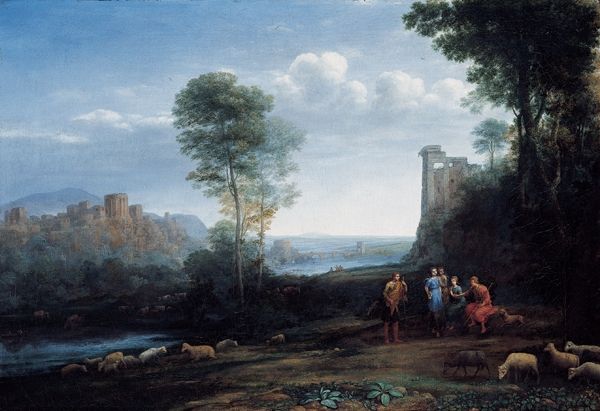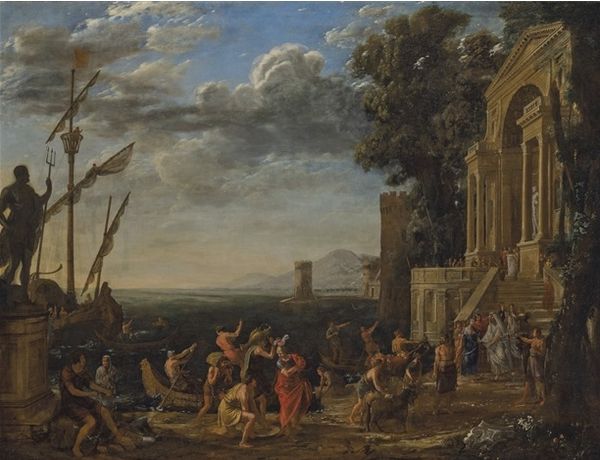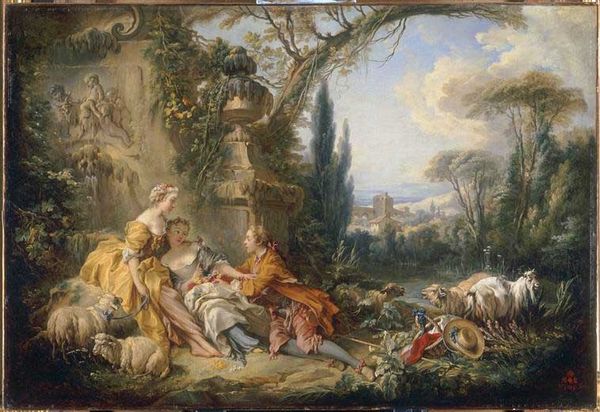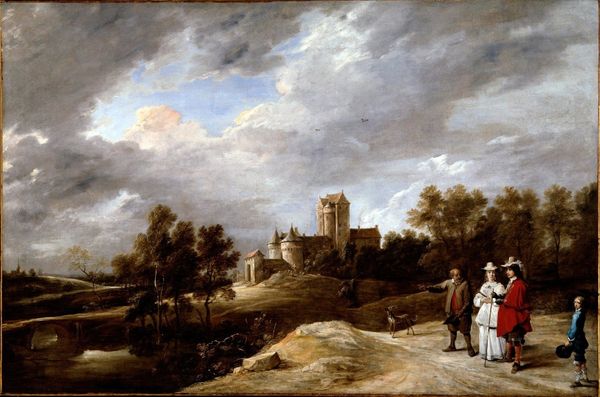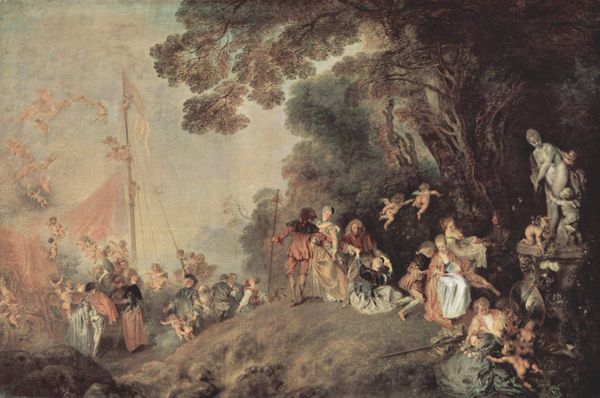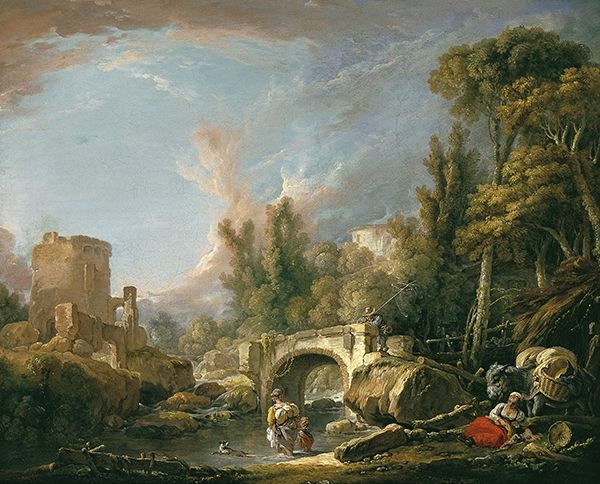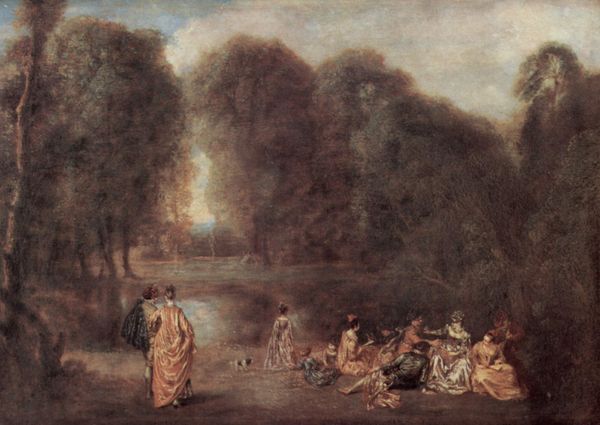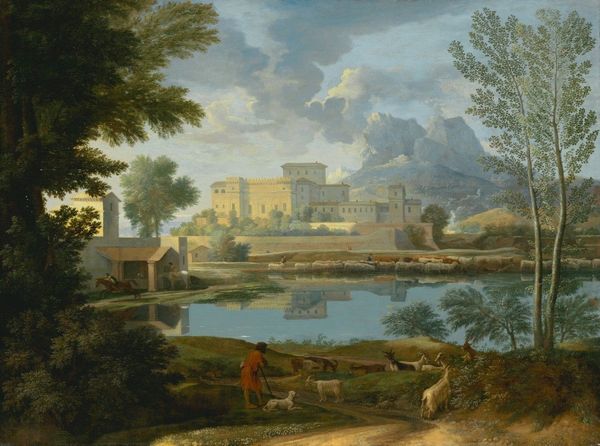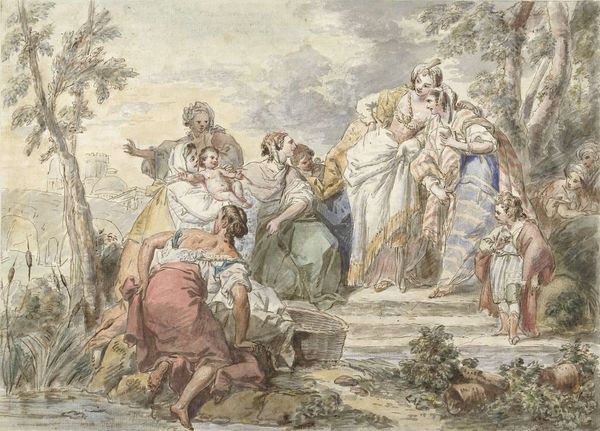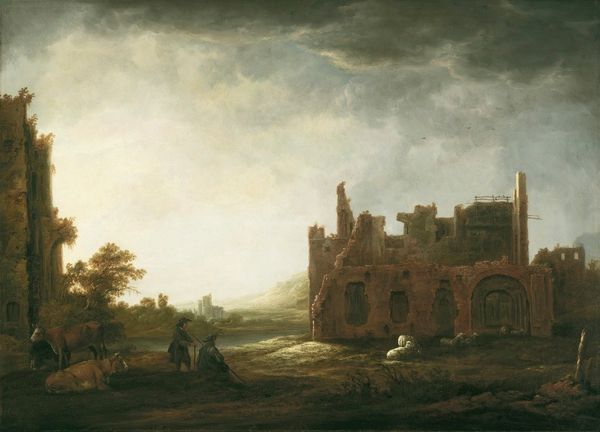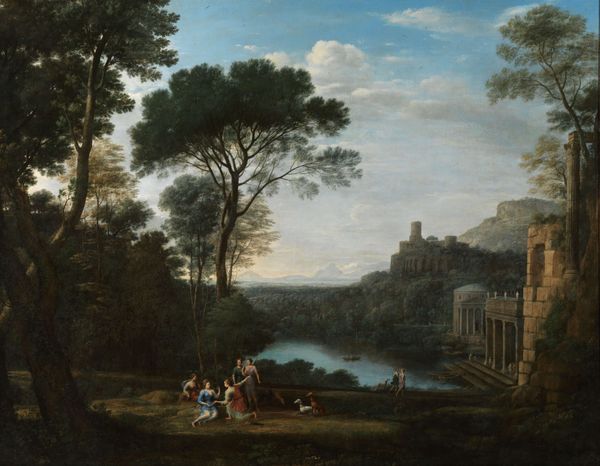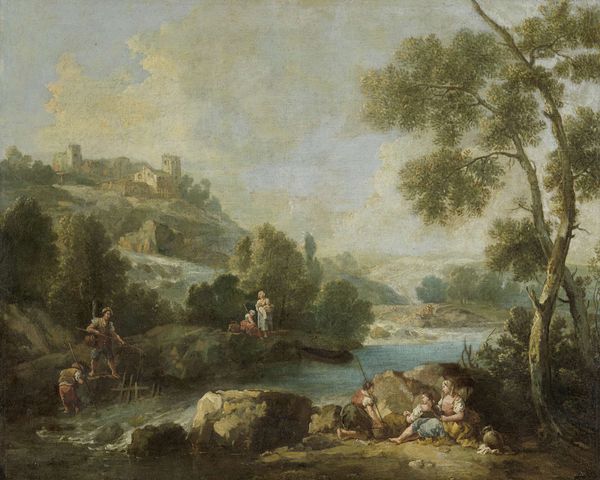
oil-paint
#
baroque
#
oil-paint
#
landscape
#
figuration
#
oil painting
#
flemish
#
mythology
#
history-painting
Dimensions: 52 x 97 cm
Copyright: Public domain
Curator: Well, here we are in front of Peter Paul Rubens’ oil on canvas, “Castle Garden,” completed around 1635. A stunning example of his landscape work, don’t you think? Editor: My first impression is just pure theatricality! It feels like a scene ripped from a play – full of dramatic movement and light. Curator: Absolutely. Look at the figures clustered near the center. To me they almost look like they are re-enacting a moment from mythology, or maybe even historical events; observe how their gestures emphasize a classical, almost choreographed feel that harkens back to antiquity. Editor: I see what you mean about the classical feel. Yet I think that Rubens is making a much bigger statement here. Think about the rise of powerful Flemish merchant families and how Rubens would depict their position using classical imagery to legitimize it. Curator: Interesting point. In a lot of Rubens’ works, figures do appear symbolic: They can represent abstract qualities, sometimes referencing peace or prosperity. They’re not merely decorative. Perhaps here, they indicate societal order, particularly regarding wealth and aristocracy of the Baroque era. The Castle in the backdrop is meant to give context. Editor: I agree, context is key. That architectural structure looms, quite literally, large in the public's eye—an impressive feat showcasing influence! It represents societal frameworks within which lives and narratives occur – structures that enable or constrain possibilities dependent on factors. I feel in this case it would do more than constrain. Curator: That play between freedom and structure is visually rich. Consider the luminosity. Rubens really highlights parts of the social dynamic in the painting through light, which, of course, has traditionally always had sacred symbolic significance. Editor: That's a very compelling perspective on his technique. Thinking about public display adds an exciting layer. Rubens does manage to integrate social messaging with artistic appeal effortlessly, as you were hinting at. Curator: He gives us much to consider regarding the human experience. This scene reveals continuity, yet remains relevant as questions evolve around purpose within structures old or new. Thank you for joining! Editor: A wonderful contribution in bridging the historical analysis, so important! Thank you!
Comments
No comments
Be the first to comment and join the conversation on the ultimate creative platform.
